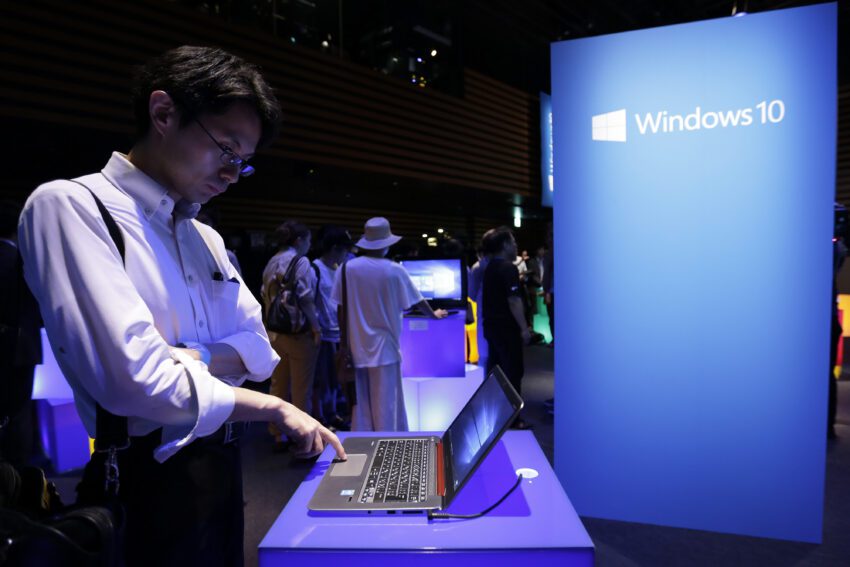
as microsoft bids farewell to windows 10 Microsoft’s decision to end support for Windows 10 has significant implications for millions of users who remain loyal to the operating system.
as microsoft bids farewell to windows 10
The Popularity of Windows 10
Windows 10 has long been a staple in the computing world, with its user-friendly interface and robust features. Despite the introduction of Windows 11, it wasn’t until recently that Windows 11 surpassed Windows 10 in terms of usage statistics. This transition highlights the enduring popularity of Windows 10, which has been a reliable choice for both personal and professional use since its launch in July 2015.
According to recent data, Windows 10 still holds a substantial market share, with millions of users relying on it for daily tasks. This widespread adoption raises questions about Microsoft’s decision to end support for the operating system, especially given the timing and the potential impact on users.
End of Support Announcement
Microsoft officially announced the end of support for Windows 10, marking a significant milestone for the company and its users. The cutoff date for support is set for October 14, 2025. This means that after this date, Microsoft will no longer provide security updates, bug fixes, or technical support for Windows 10. The decision aligns with Microsoft’s broader strategy to encourage users to transition to Windows 11, which boasts enhanced features and improved performance.
Implications for Users
The end of support for Windows 10 raises several critical implications for users. Without ongoing support, systems running Windows 10 will become increasingly vulnerable to security threats. Cybersecurity experts warn that unsupported operating systems are prime targets for hackers, as they can exploit known vulnerabilities without fear of being patched. This situation could lead to data breaches, malware infections, and other security incidents that could jeopardize personal and organizational data.
Moreover, users may face compatibility issues with new software and applications. As developers focus on optimizing their products for Windows 11, those still using Windows 10 may find themselves unable to access the latest features or updates. This could hinder productivity and limit the functionality of essential tools.
Microsoft’s Strategy
Microsoft’s decision to phase out Windows 10 support is part of a broader strategy to drive adoption of Windows 11. The company has invested significant resources into developing the new operating system, which includes a redesigned interface, enhanced gaming capabilities, and improved performance. By discontinuing support for Windows 10, Microsoft aims to incentivize users to upgrade, thereby increasing the overall market share of Windows 11.
Windows 11 Features
Windows 11 introduces several features that set it apart from its predecessor. Some of the most notable enhancements include:
- Redesigned User Interface: Windows 11 features a more streamlined and modern interface, with a centered Start menu and rounded corners for windows.
- Improved Performance: The new operating system is designed to be faster and more efficient, with optimizations for gaming and multitasking.
- Enhanced Gaming Features: Windows 11 includes DirectStorage and Auto HDR, which improve gaming performance and visual quality.
- Virtual Desktops: Users can create multiple virtual desktops for different tasks, making it easier to organize workflows.
These features, among others, are designed to provide users with a more engaging and productive experience. However, the transition to Windows 11 is not without its challenges, particularly for those who have become accustomed to Windows 10.
Stakeholder Reactions
The announcement of Windows 10’s end of support has elicited mixed reactions from various stakeholders, including users, IT professionals, and industry analysts. Many users express frustration over the decision, particularly those who have invested time and resources into customizing their Windows 10 experience. For some, the prospect of upgrading to Windows 11 is daunting, especially if they are concerned about compatibility issues with existing hardware or software.
IT professionals also voice concerns regarding the transition. Organizations that rely on Windows 10 for their operations must now consider the implications of migrating to a new operating system. This process can be time-consuming and costly, requiring thorough testing and training to ensure a smooth transition. Additionally, businesses must weigh the potential risks associated with continuing to use an unsupported operating system.
Industry Analysts’ Perspectives
Industry analysts have noted that Microsoft’s decision to end support for Windows 10 may be a double-edged sword. While it encourages users to adopt newer technology, it also risks alienating a significant portion of its user base. Analysts suggest that Microsoft could have taken a more gradual approach to phasing out support, perhaps by extending the support timeline or offering incentives for users to upgrade.
Furthermore, some analysts argue that the abrupt cutoff may lead to a fragmented user base, with some users clinging to Windows 10 while others transition to Windows 11. This fragmentation could complicate software development and support, as developers may need to accommodate both operating systems for an extended period.
Future of Windows Operating Systems
The end of support for Windows 10 marks a pivotal moment in the evolution of Microsoft’s operating systems. As the company shifts its focus to Windows 11, it raises questions about the future of its software offerings. Will Microsoft continue to support older versions of Windows in the same way, or will it adopt a more aggressive approach to phasing out legacy systems?
Looking ahead, it is likely that Microsoft will continue to innovate and refine its operating systems, introducing new features and enhancements to meet the evolving needs of users. However, the company must also balance this innovation with the needs of its existing user base, ensuring that transitions are as seamless as possible.
Advice for Windows 10 Users
For those who continue to use Windows 10, it is essential to take proactive steps to mitigate potential risks associated with the end of support. Here are some recommendations:
- Consider Upgrading: Evaluate the benefits of upgrading to Windows 11. Assess your hardware compatibility and the features that may enhance your productivity.
- Enhance Security: Implement additional security measures, such as using antivirus software and regularly backing up important data.
- Stay Informed: Keep abreast of developments related to Windows 10 and Windows 11, including updates and security advisories.
By taking these steps, users can better prepare for the transition and ensure that their systems remain secure and functional.
Conclusion
The end of support for Windows 10 is a significant development that affects millions of users worldwide. While Microsoft aims to drive adoption of Windows 11, the transition poses challenges for many who have relied on Windows 10 for years. As users weigh their options, it is crucial to consider the implications of remaining on an unsupported operating system and to take proactive measures to safeguard their data and systems.
Source: Original report
Was this helpful?
Last Modified: October 14, 2025 at 8:38 pm
1 views















